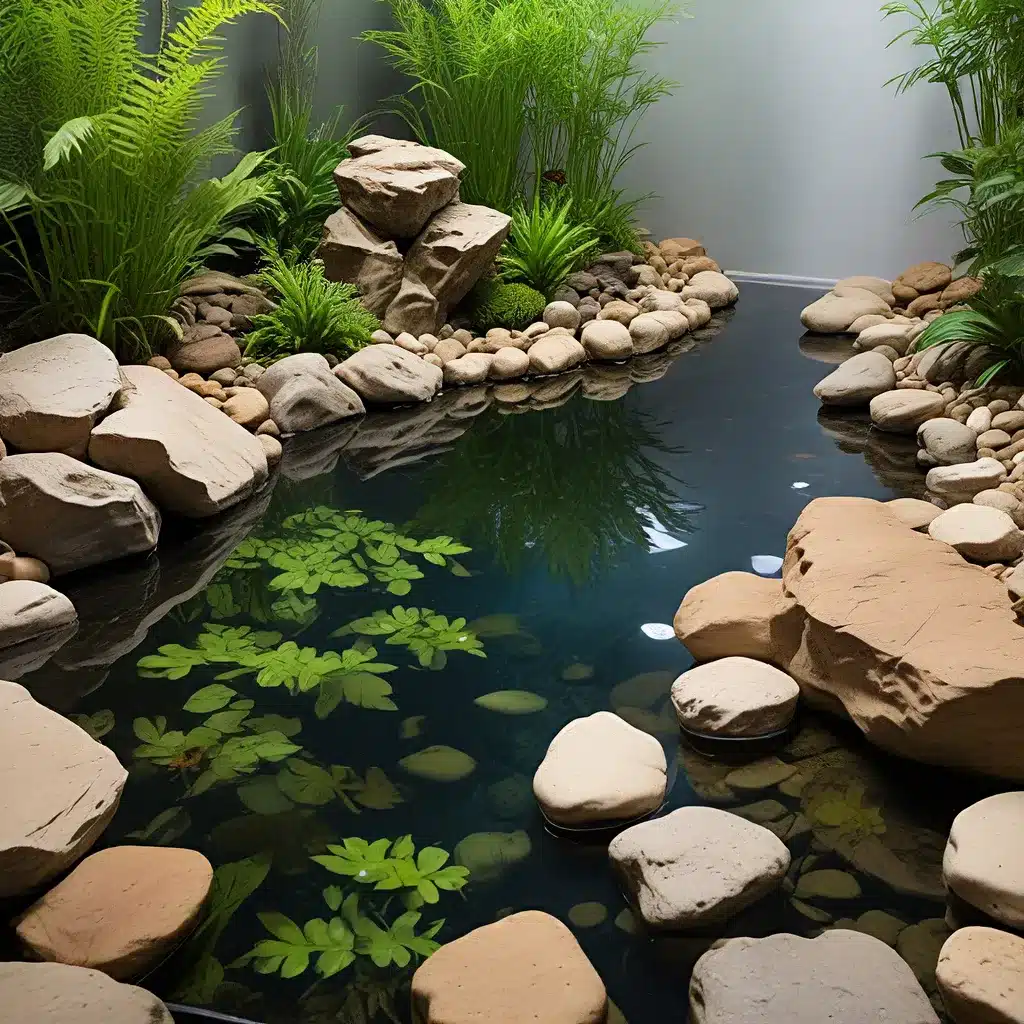
Understanding the Benefits of Biophilic Design in Aquariums
When it comes to creating a visually stunning and captivating aquarium, the choice of substrate materials can play a pivotal role in achieving the desired aesthetic. One natural substrate option that has gained popularity among aquarists is the incorporation of riverbed stones. These tactile and earthy elements not only enhance the overall look of the aquarium but also contribute to a more immersive and biophilic experience for both the fish and the hobbyist.
Biophilic design, a concept that emphasizes the innate human connection with nature, has been gaining traction in various design disciplines, including aquarium-keeping. By incorporating natural elements like riverbed stones, aquarists can tap into the inherent benefits of biophilic design, which can positively impact the well-being and mental health of both the fish and the aquarium owner.
Replicating Natural Habitats with Riverbed Stones
One of the primary advantages of using riverbed stones as a substrate in aquariums is the ability to recreate the natural environments that many fish species thrive in. These stones, with their varied shapes, sizes, and textures, can mimic the rocky and gravel-based substrates found in rivers, streams, and other freshwater habitats. This attention to detail not only enhances the aesthetic appeal of the aquarium but also provides a more suitable and enriching environment for the inhabitants.
Riverbed stones can offer the following benefits for aquarium inhabitants:
-
Improved Habitat Replication: The diverse shapes and sizes of riverbed stones can replicate the complex and varied terrain found in natural aquatic environments. This allows fish to exhibit natural behaviors, such as foraging, hiding, and establishing territories, which can contribute to their overall health and well-being.
-
Enhanced Substrate Stability: Riverbed stones, when arranged thoughtfully, can provide a stable and secure substrate for rooted aquatic plants, preventing uprooting and ensuring the long-term success of the aquarium’s aquascaping.
-
Beneficial Microfauna Development: The porous and textured surfaces of riverbed stones can support the growth of beneficial microfauna, such as biofilm and algae, which serve as a natural food source for many fish species, contributing to a more balanced and self-sustaining ecosystem.
-
Improved Water Quality: The unique properties of riverbed stones, including their ability to absorb and release nutrients, can help maintain stable water parameters, reducing the risk of water quality issues and promoting the overall health of the aquarium inhabitants.
Aesthetic Considerations for Riverbed Stone Aquascaping
Beyond the functional benefits, the incorporation of riverbed stones in aquarium design can also contribute to a visually stunning and harmonious aesthetic. By carefully selecting and arranging the stones, aquarists can create captivating and naturalistic aquascapes that evoke a sense of tranquility and connection with the natural world.
When choosing riverbed stones for an aquarium, it is essential to consider factors such as:
-
Stone Size and Shape: Varying the size and shape of the stones can create a more visually appealing and natural-looking substrate. Mixing larger, more prominent stones with smaller, more delicate ones can add depth and texture to the aquascape.
-
Stone Color and Texture: The color and texture of the riverbed stones can significantly impact the overall aesthetic of the aquarium. Earthy tones like browns, grays, and blacks can create a more natural and grounded appearance, while lighter-colored stones may provide a more modern or minimalist look.
-
Arrangement and Layering: Thoughtful placement and layering of the riverbed stones can mimic the natural formations found in rivers and streams. Strategically arranging the stones to create visual depth, hiding spots, and planting areas can enhance the realism and overall appeal of the aquascape.
-
Integration with Aquatic Plants: Incorporating aquatic plants, such as hardy mosses, ferns, and small-leaved stem plants, can further accentuate the natural aesthetic of the riverbed stone aquascape. Carefully positioning the plants around and among the stones can create a cohesive and harmonious underwater landscape.
Maintenance and Longevity of Riverbed Stone Aquariums
While the use of riverbed stones in aquariums offers numerous benefits, it is essential to consider the maintenance and longevity of such setups. Proper care and maintenance can ensure the longevity of the aquarium and the health of its inhabitants.
Key considerations for maintaining riverbed stone aquariums include:
-
Cleaning and Vacuuming: Regular cleaning and vacuuming of the substrate are crucial to remove accumulated debris, excess detritus, and uneaten food. This helps maintain water quality and prevent the buildup of harmful compounds.
-
Aquatic Plant Maintenance: Regularly trimming and pruning aquatic plants growing around the riverbed stones can prevent overcrowding and ensure the plants continue to thrive.
-
Water Parameter Monitoring: Closely monitoring water parameters, such as pH, temperature, and dissolved oxygen levels, is essential to ensure the aquarium remains within the optimal range for the inhabitants.
-
Replacement and Replenishment: Over time, riverbed stones may become covered in algae or accumulate mineral deposits. Replacing or replenishing a portion of the stones can help maintain the desired aesthetic and ensure the substrate remains in good condition.
By addressing these maintenance considerations, aquarists can enjoy the long-term benefits of a thriving riverbed stone aquarium that combines the beauty of nature with the well-being of its aquatic inhabitants.
Conclusion: Embracing Biophilic Design for a Harmonious Aquarium
Incorporating riverbed stones into aquarium design is a powerful way to embrace the principles of biophilic design and create a visually stunning and ecologically balanced environment. By replicating natural habitats and providing a tactile and earthy aesthetic, aquarists can not only enhance the well-being of their aquatic life but also foster a deeper connection with the natural world.
As you embark on your aquarium-keeping journey, consider the transformative power of riverbed stones and the benefits of biophilic design. By harmonizing the artificial and the natural, you can cultivate a captivating and immersive aquatic ecosystem that not only delights the senses but also nourishes the mind and soul.
For more inspiration and expert advice on aquarium design and maintenance, be sure to explore the wealth of resources available on King Aquarium, your one-stop-shop for all your aquarium needs.

